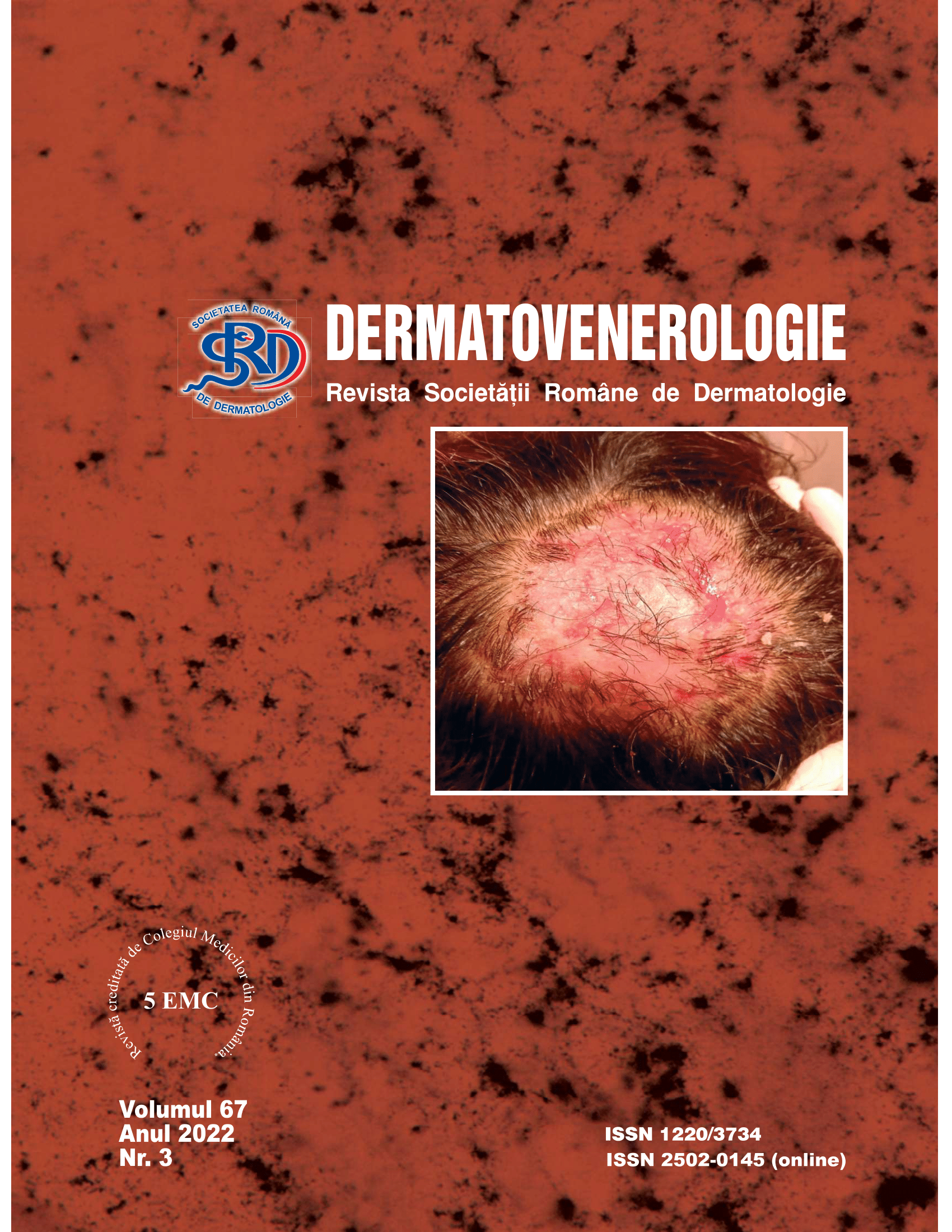Summary
Introduction: Disseminated superficial actinic porokeratosis (DSAP) is a keratinization disorder and the most common variant form of porokeratosis. UV radiation, immunosuppression, radiotherapy, trauma, and genetic factors are all risk factors for DSAP. Porokeratosis usually affects sunexposed skin, and it appears as multiple pink macules, with hypertrophic, well-defined borders and an atrophic center.
Clinical case: We present the case of a 70-year-old patient, with a history of left mastectomy and radiotherapy for breast cancer, who came to the Dermatology Clinic, for a bilateral eruption on the calves, consisting of multiple pinkish-brown, itchy macules. A diagnosis of DSAP was established based on clinical examinations, the dermoscopic pattern of "volcanic crater", and the histopathological identification of the” cornoid lamella”. Laboratory tests showed high values of fasting blood glucose and positive results for IgG antibodies against HSV type 1, toxoplasma and rubella. Following topical treatment with 0.2% polyvinyl A, 0.02% tretinoin, 4% glycolic acid gel and 5% diclofenac gel the lesions regressed.
Conclusions: Multiple treatment options are available for DSAP, no standard care being recognized. Such cases should be followed-up clinically and dermoscopically considering the potential for malignant transformation of such cases.


